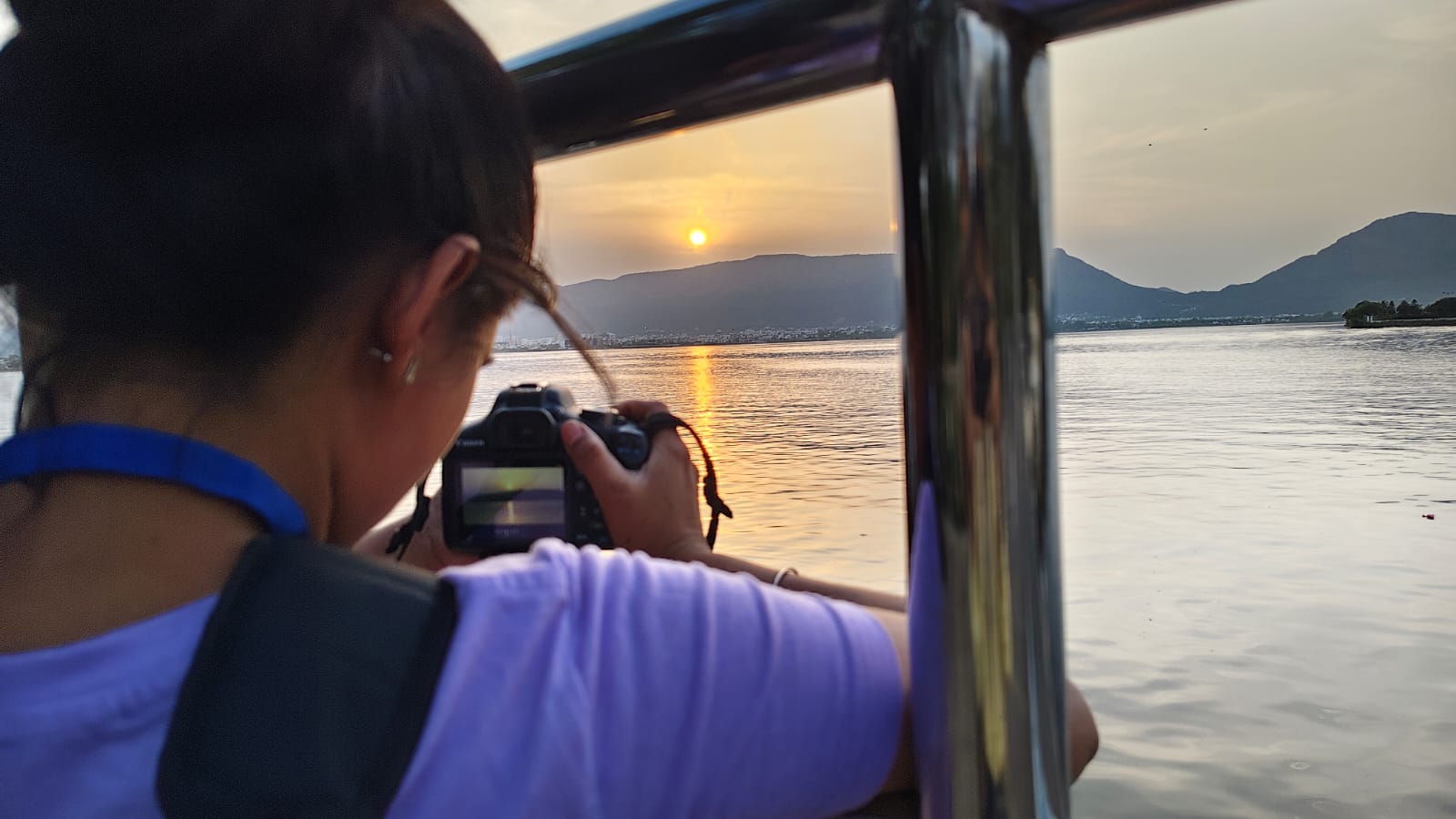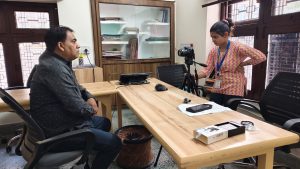
11 Aug Ajmer ki Ladkiyan Kahan Hain?
When Young Women Ask the City to Make Space for Them
“Ajmer ki ladkiyan kahan hain?”
It’s a simple question. But behind it is a powerful provocation.
This is a city where girls are seen — going to school, fetching groceries, rushing home from tuition. And yet, they’re often not seen — not on terraces after dark, not loitering in parks, not laughing loudly in tea stalls or walking slowly.
Public space in Ajmer, like in most Indian cities, doesn’t always feel like it belongs to its young women. And so three young women, Santra, Renu and Nameera, decided to ask the question out loud. Not in reports or surveys, but through a camera, a notebook, and open-ended conversations. The result was a deeply personal and political project: “Ajmer ki Ladkiyan Kahan Hain?”
Finding the Unseen City
The idea was born during their fellowship with Cities for Youth , a program run by Safetipin to support youth-led city-building in four cities of Rajasthan. As part of the program, Santra, Nameera and Renu explored the idea of what makes a city feel like it belongs to you. What makes you want to stay a little longer in the park, or walk alone without fear?
They started walking through the city with a new lens. Who is present, and who is missing? Where are the girls in the evening? What kind of public spaces do they avoid? What makes them feel safe, or unsafe?
The project led them to conversations with dozens of young women across Ajmer. Some shared how they timed their outings with the sun. Others spoke of how being in public came with invisible rules — how to walk, how to sit, how loud to speak, and when to go back home.
“There are no girls in my neighbourhood terrace after 7 pm,” said one 16-year-old.
“It’s not that we don’t want to be outside,” shared another, “It’s just that people make it so hard.”
Telling Stories Through Film
 The stories didn’t just emerge in quiet interviews or closed rooms. Santra,
The stories didn’t just emerge in quiet interviews or closed rooms. Santra,
Renu, and Nameera picked up their phones and went into the city with curiosity, courage, and a camera. The process of filming itself was not just documentation, but rather an act of reclaiming the city.
It is rare in Ajmer to see young women standing in public spaces with cameras. They filmed at Ajmer Sharif, at bus stops, in Parks, in crowded buses. As they filmed on the streets, men stared. Shopkeepers asked questions. Passersby stopped to observe. The girls moved through the bustle and faith with a quiet confidence, asking questions, setting up shots.
 They spoke with other girls about their experiences in the city — how they navigated space, safety, and expectations. But they also took the conversation beyond. They interviewed parents to understand what safety meant to them. They spoke to teachers who had seen generations of girls come and go. And they sat with a woman delivery worker, one of the few visible women on the streets, who was creating her own path through the city every day.
They spoke with other girls about their experiences in the city — how they navigated space, safety, and expectations. But they also took the conversation beyond. They interviewed parents to understand what safety meant to them. They spoke to teachers who had seen generations of girls come and go. And they sat with a woman delivery worker, one of the few visible women on the streets, who was creating her own path through the city every day.
“People often say you are doing delivery despite being a woman. Can’t you find some other work? But I will keep doing this because I love my work” says Sangeeta, a delivery partner from Ajmer.
Just being there with a camera was transformative. They were seen. And they saw themselves differently too.
A City Listens: The First Screening
The film premiered in a community screening held in Ajmer. The screening, attended by over 80 young people, community members, and civil society members, sparked open discussions about gender and space. Many women spoke for the first time about how their relationship with public space had been shaped by fear, shame, or the need to “be careful.” “This film brought a change in me. It is the first time I am seeing the city through the eyes of a woman” says a 24 year old man present at the premiere. “My mother was the happiest when she got to know someone was going to interview her for a film. She felt her voice matters. Too” said the daughter of a woman who faced the camera for the first time in her life.
Apart from Safetipin, the team also received support from MJAS (Mahila Jan Adhikar Samiti) , who helped them identify safe community spaces for the screenings and supported follow-up dialogues with girls and women.
What’s Next?
As this phase of the project wraps up, the three fellows are thinking ahead. They want to host more local screenings, especially in bastis and schools. They are also exploring the possibility of taking the film to bigger platforms and connecting with organisations who could expand its reach.
For more details and updates on many such projects and Cities for Youth, visit Cities For Youth website and follow us on Instagram @cfy_rajasthan.

